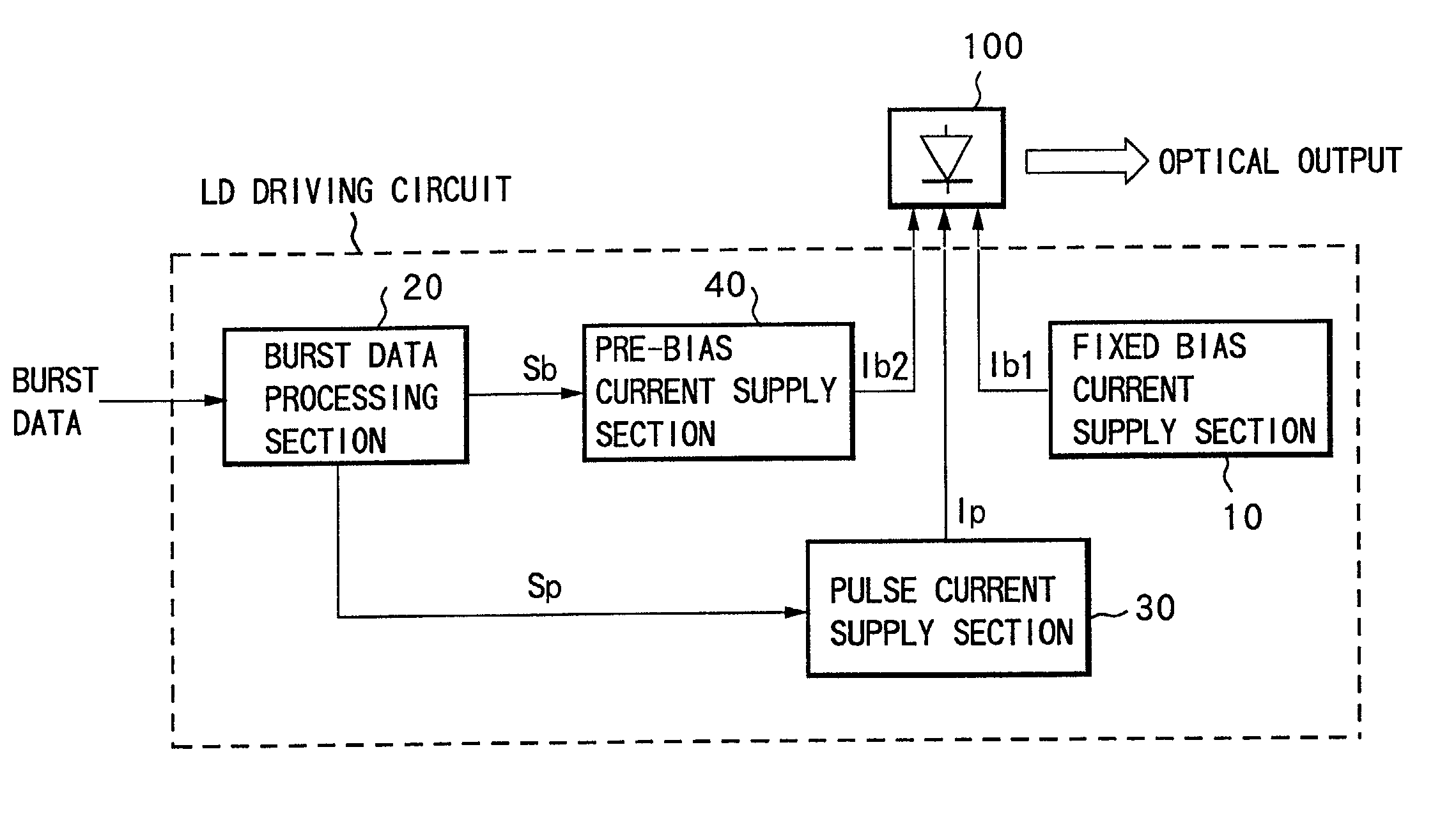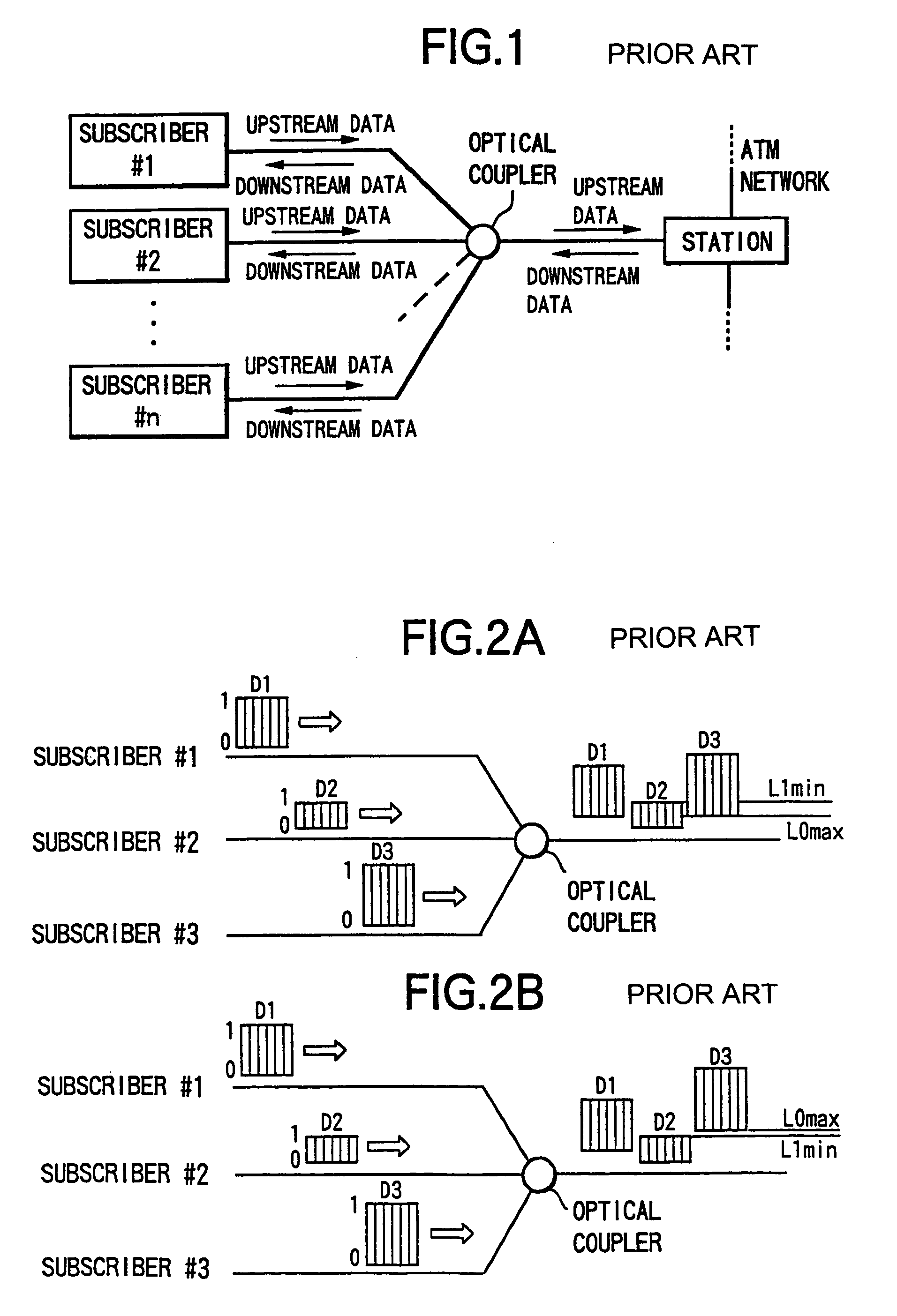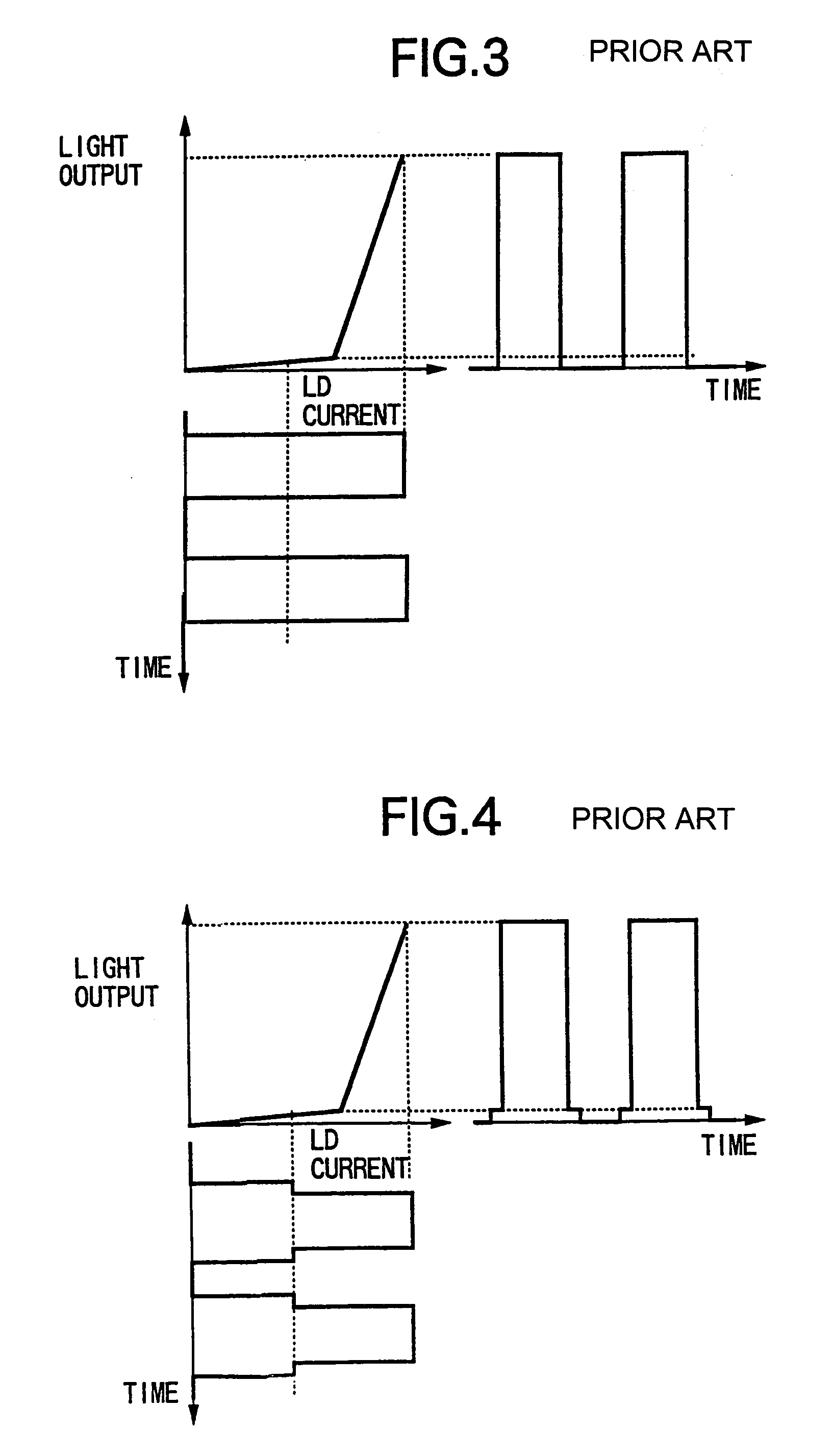Driver circuit and driving method for semiconductor laser
a driving method and semiconductor laser technology, applied in semiconductor lasers, laser details, laser output parameters control, etc., can solve the problem of limiting the ability of this method to cope with a high transmission speed, the more difficult it becomes to accurately and reliably supply the pre-bias current immediately before and immediately after
- Summary
- Abstract
- Description
- Claims
- Application Information
AI Technical Summary
Benefits of technology
Problems solved by technology
Method used
Image
Examples
first embodiment
[0053]FIG. 6 is a block diagram showing a basic construction of a semiconductor laser driver circuit according to a
[0054]In FIG. 6, this driver circuit comprises: a fixed bias current supply section 10 serving as first bias current supply means that applies a fixed bias current Ib1 (first bias current) to a semiconductor laser (LD) 100, a burst data processing section 20 serving as a signal processing means that generates, based on burst data (a data signal) from outside, a pre-bias signal Sb corresponding to a second bias current control signal and a pulse signal Sp corresponding to a pulse current control signal, a pulse current supply section 30 serving as pulse current supply means that applies to the LD 100 a pulse current Ip generated in accordance with the pulse signal Sp, and a pre-bias current supply section 40 serving as second bias current control means that applies to the LD 100 pre-bias current Ib2 (second bias current) generated in accordance with the pre-bias signal S...
third embodiment
[0084]FIG. 14 is a block diagram showing a construction of an LD driving circuit of the
[0085]In FIG. 14, this LD driving circuit is constructed so that a monitor light receiving section 60 serving as optical output detection means, and a fixed bias current control section 70 serving as first bias current control means, are added to the construction of the first embodiment.
[0086]The monitor light receiving section 60 receives a part of the light output from the LD 100 and generates a monitor current, to output the monitor current to the fixed bias current control section 70. The monitor light receiving section 60 is provided with a light receiving element (PD) having sufficient light reception sensitivity with respect to weak light (spontaneous emission light) emitted from the LD 100 by the supply of the fixed bias current Ib1 at the time of non-transmission of burst data. Furthermore, in a case where the monitor current output from the light receiving element does not reach a suffic...
fifth embodiment
[0096]Next is a description of the present invention.
[0097]In the abovementioned first through fourth embodiments, the pre-bias current Ib2 is supplied to the LD 100 over the whole area (period) to be transmitted with the burst data. However, in a case where the pre-bias current Ib2 is sufficiently small compared to the pulse current Ip, once transmission of burst data is started, then taking into consideration the carrier density in the LD 100, if the pre-bias current Ib2 is applied in an area of part of the head side rather than being applied to the whole burst data transmission area, the burst data can be transmitted at a high speed. In the fifth embodiment, a description is given for a specific example of the above case.
[0098]FIG. 17 is a functional block diagram showing a construction of a burst data processing section used in the fifth embodiment. The construction of parts other than the burst data processing section is the same as for the case of any of the abovementioned res...
PUM
 Login to View More
Login to View More Abstract
Description
Claims
Application Information
 Login to View More
Login to View More - R&D
- Intellectual Property
- Life Sciences
- Materials
- Tech Scout
- Unparalleled Data Quality
- Higher Quality Content
- 60% Fewer Hallucinations
Browse by: Latest US Patents, China's latest patents, Technical Efficacy Thesaurus, Application Domain, Technology Topic, Popular Technical Reports.
© 2025 PatSnap. All rights reserved.Legal|Privacy policy|Modern Slavery Act Transparency Statement|Sitemap|About US| Contact US: help@patsnap.com



